In the 2019/20 Victorian Budget a total of $2.1 billion was allocated for upgrades to the Sunbury line, in preparation for the new High Capacity Metro Trains set to run via the Metro Tunnel by late 2025. So what does that money get you?
Digging deeper
First stop – the 2019/20 State Budget papers:
New trains for Sunbury
The Sunbury line will be transformed as part of the largest rail corridor upgrade in Victoria’s history. A range of platform, stabling and traction power upgrades will be undertaken on the Sunbury line to support the end-to-end operation of High Capacity Metro Trains on the Sunbury to Cranbourne-Pakenham rail corridor.
This investment complements other recent investments by the State on this corridor including the Metro Tunnel project, the removal of several level crossings, and power, signalling and other infrastructure upgrades on the Cranbourne-Pakenham line.
The Metro Tunnel page on “upgrades to the rail network” has a map showing the scope of the work.
As well as explaining the upgrades themselves.
High Capacity Signalling
As part of the Metro Tunnel Project, High Capacity Signalling (HCS) will be installed from Watergardens to Dandenong.
High Capacity Signalling will enable Victoria’s new fleet of High Capacity Metro Trains to run on the Cranbourne, Pakenham and Sunbury lines and through the Metro Tunnel.
Sophisticated HCS equipment will be installed in both the rail corridor and within the driver’s cabin of each train, allowing trains to safely run closer together.
Track side communication equipment will also be installed along the length of the corridor.
Dedicated control centres will be built in Dandenong and Sunshine to support the new technology and will be fully staffed by experts who will monitor trains on the new Metro Tunnel line.
Train stabling
Stabling facilities are used to maintain and store trains when they are not in service. The existing Calder Park stabling facility is proposed to be expanded to store and maintain the new High Capacity Metro Trains. Changes may also be required to existing train stabling at Watergardens and Sunbury to accommodate the new trains.
Platform modifications
New High Capacity Metro Trains are being delivered by the Victorian Government to meet the future needs of Melbourne. The new trains will have more carriages, carry more passengers and be longer than trains used today.
Some existing stations on the Sunbury, Cranbourne and Pakenham lines may require platform extensions and ancillary works to support the longer trains.
Works at West Footscray station, including an extra platform, will also be undertaken to enable some Sunbury-bound services to turn around at this station.
This will enable trains to terminate and commence from West Footscray station which in turn, will create more services towards the city on this line.
Power upgrades
Electricity upgrades are proposed to power the new trains and systems that are part of the Metro Tunnel. This may include upgrading a number of existing substations and potentially building new power facilities along the rail corridor.
They also provide a basic map showing where the works are required.
But what will the upgrades like look like?
No need to wonder – identical works are underway on the other side of the city as part of the Cranbourne-Pakenham Line Upgrade (CPLU) project.
A new signal control centre has been built at Dandenong station.
With plenty of new electrical conduits installed along the tracks.
And signal equipment rooms.
New cables are being run.
Connecting to new line side signals.
New overhead stanchions have been installed along the corridor.
Supporting brand new overhead wires.
Additional copper traction power feeder cables have been added in parallel with the normal pair of catenary and contact wires, to supply the power hungry High Capacity Metro Trains.
Along with new traction power substations, which convert the 22kV AC mains power to the 1500V DC used by trains.
And finally – platform extensions.
Some are short and basic.
Others include ramps and shelters for wheelchair passengers.
But the extension at the down end of Springvale platform 1 takes the cake – it’s only 1.5 metres long!
The rebuilt Springvale station opened in 2014 – did someone miss the “new platforms must be 160 metres long” memo?
So what about the cost?
The 2019/20 State Budget papers break downs the funding allocated to the Sunbury line upgrade, due to be delivered over the next four years.
| Year | Million $ |
|---|---|
| 2019-20 | 202.1 |
| 2020-21 | 491.8 |
| 2021-22 | 715.5 |
| 2022-23 | 292.6 |
| Total | 2050.4 |
$2.1 billion is a lot of money, so let’s compare it to some other recent contracts.
The Metro Tunnel has two separate works packages currently delivering similar work, at a cost of $1 billion each:
Rail Systems
The Rail Systems Alliance (RSA) will include the design, supply, installation, testing, integration and commissioning activities in relation to train and power control systems, operational control systems, conventional and high capacity signalling.
Rail Systems works will be undertaken by a consortium comprising CPB Contractors and Bombardier Transportation.
Rail Infrastructure
The Rail Infrastructure Alliance (RIA) will include works at the eastern and western tunnel entrances (portals) including cut and cover tunnelling, decline structures and the reconfiguration and realignment of existing lines to connect the new Metro Tunnel rail tracks to the existing surface network.
RIA will also deliver a new platform at West Footscray and associated suburban rail upgrades that will maximise the benefits of the Metro Tunnel.
A consortium comprising John Holland, CPB Contractors and AECOM will deliver these works, in partnership with Rail Projects Victoria and Metro Trains Melbourne.
We also know how much the Cranbourne-Pakenham Line Upgrade is due to cost, thanks to the 2018/19 Victorian Budget:
The new Sunbury to Cranbourne-Pakenham corridor will be transformed as part of the largest rail corridor upgrade in Victoria’s history.
The project includes a range of signalling, power and infrastructure upgrades along and Cranbourne-Pakenham corridor, as well as initial readiness works and further design and development work on the Sunbury line. These upgrades will increase capacity, improve system resilience and accommodate the new High Capacity Metro Trains on the Sunbury to Cranbourne-Pakenham corridor.
It also includes planning and development activities for a future Cranbourne line duplication and associated works at the Dandenong and Caulfield rail junctions.
The funds for the Cranbourne-Pakenham part of the upgrades is as follows:
| Year | Million $ |
|---|---|
| 2018-19 | 113.1 |
| 2019-20 | 375.1 |
| 2020-21 | 51.4 |
| Total | 539.5 |
Hmm – $539 million? That’s a quarter of the Sunbury line works bill!
More buried figures
Turns out the Cranbourne-Pakenham Line Upgrade isn’t the only project currently underway to get the corridor ready for the new High Capacity Metro Trains – the Level Crossing Removal Authority is also responsible for delivering upgrades, as part of the “CD9” Caulfield to Dandenong (CTD) Level Crossing Removal Project.
The April 2018 media release for the Cranbourne-Pakenham Line Upgrade touched on this:
The Victorian Budget 2018/19 will provide $572 million to deliver further upgrades to Melbourne’s busiest rail corridor – delivering power upgrades, and modern signalling from the city to Cranbourne and Pakenham.
The existing project to remove the level crossings between Caulfield and Dandenong has included the delivery of upgraded power, new track, longer platforms and modernised signalling.
This new project will expand these upgrades along the entire corridor to ensure new, high-capacity trains can reliably run all the way from Cranbourne and Pakenham to Sunbury – linked through the CBD by the Metro Tunnel.
While the Level Crossing Removal Project business case dated May 2017 spelled out the interdependencies between the projects.
The LXRP plays a critical role in enabling the full benefits of major rail projects such as the Cranbourne Pakenham Line Upgrade (CPLU) and the Metro Tunnel to be achieved. This business case also includes a combined appraisal of these three critically interdependent transport projects.
Many of the level crossing removals are critical components of the Victorian Government’s program of major rail network upgrades. In particular, the removal of nine level crossings on the Caulfield-Dandenong corridor and three level crossings on the Sunbury corridor, allow for the rail service increases planned under both the Cranbourne Pakenham Line Upgrade (CPLU) and the Metro Tunnel.
But it is the Auditor General who gets to the bottom of the money trail, in the December 2017 “Managing the Level Crossing Removal Program” report, where three areas of scope creep are raised.
Poor network integrity
Poor network integrity has already contributed to cost increases for some rail projects, such as those along the Cranbourne Pakenham rail corridor that include the HCMT, CTD and the MTP.
In March 2017, PTV predicted that the long lead times of projects in the CPLU program would necessitate parallel development and delivery to meet key delivery dates. However, detailed consideration of the appropriate network requirements, and their subsequent application to the projects currently in delivery, highlighted some scope gaps and interface management issues that need to be resolved.
Futureproofing
The business case was set up on the assumption of like-for-like replacement of existing infrastructure, but this was not realistic. For example, as the program progresses, works at level crossing removal sites along the Frankston and Cranbourne/Pakenham lines—such as required traction power upgrades and High Capacity Metropolitan Train (HCMT) requirements—are being identified. These requirements were known at the time of the business case development.
The business case provides for the construction of futureproofing works for 13 of the 16 crossings identified as requiring such works. These works include:
– increasing station platform length
– widening the rail corridor
– building wider road bridges.LXRA will make provisions for the remaining three crossings — for example, by setting aside the required land — but will not construct the works as part of the current program.
Power upgrades
MTM and PTV have an agreed electrical network standard requiring a minimum 1 300 volts under normal conditions and 1 150 volts for first-order traction power failure conditions. The standard allows for changes to the service plan including the integration of HCMT rolling stock and proposed service level changes. The majority of the traction power network does not comply with the new standard.
The LXRP business case is based on maintaining existing network capacity. LXRP provides for the removal and replacement of overhead systems and associated infrastructure only where the removal requires new track. New substations for future traction power requirements were specifically excluded from the business case cost estimates, as the LXRP is not a network upgrade project.
And gives a dollar figure for two of the three areas:
An indicative cost estimate for addressing poor network integrity issues was $381.3 million — $158.6 million for additional work required in 2017–18 and a provision to cover associated risks of $222.7 million. The business case estimates the cost of futureproofing works at all 16 sites to be $148 million.
Giving a total of $529 million.
The final sums
So it looks like the “$539 million” for the Cranbourne-Pakenham Line Upgrade got a lot of work done for free by the Level Crossing Removal Authority! Track, signalling, stations and overhead built from scratch thanks to the level crossing removals between Caulfield and Dandenong, and longer platforms, upgraded overhead and additional substations thrown in after the fact – and all completed at the same time to avoid additional spending on rail replacement buses.
However there is 35km of track between South Kensington to Sunbury – far less than the 11km of track between Flinders Street and Caulfield, 14 km between Dandenong and Cranbourne, and 27km between Dandenong and Pakenham to be done under the “$539 million” budget on the eastern side of Melbourne. Perhaps there is more cost shifting onto other projects going on?
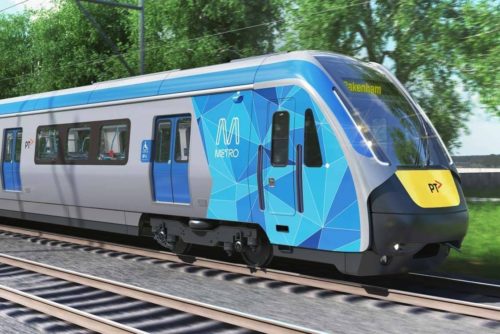
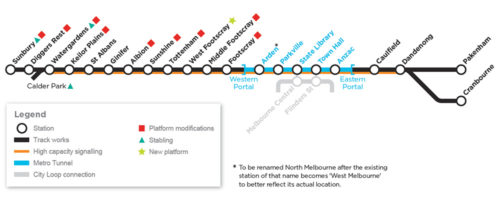
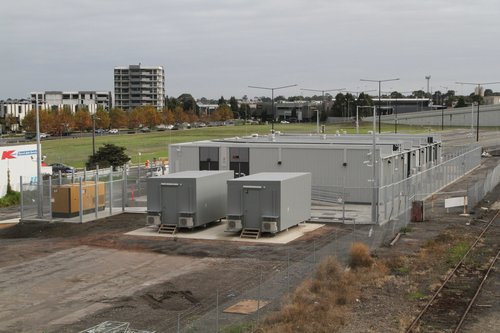
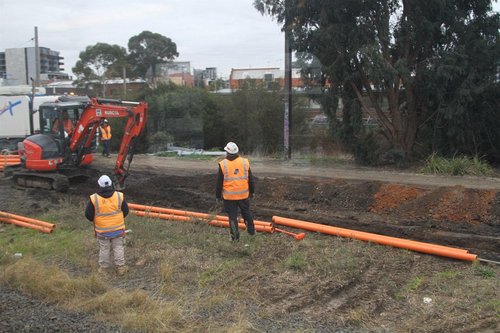
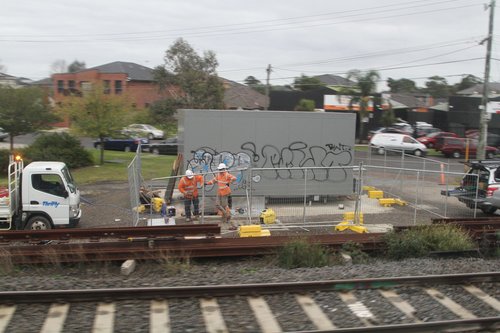
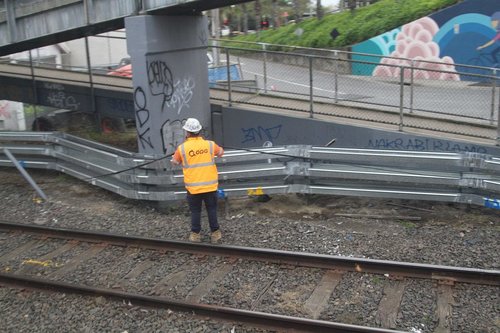
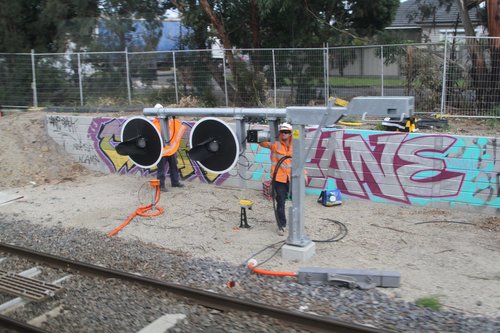
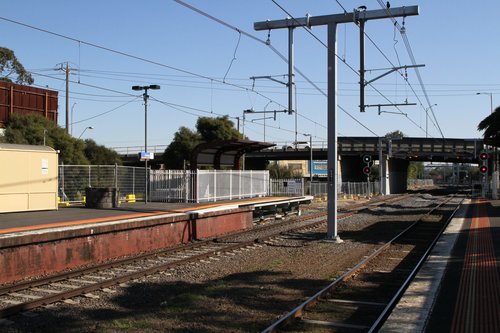
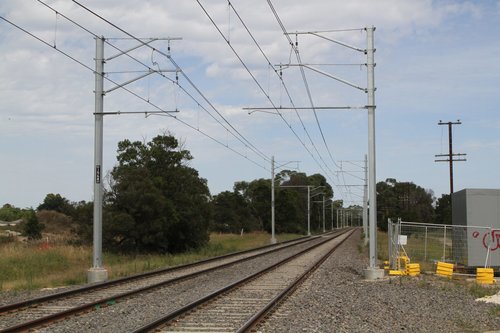
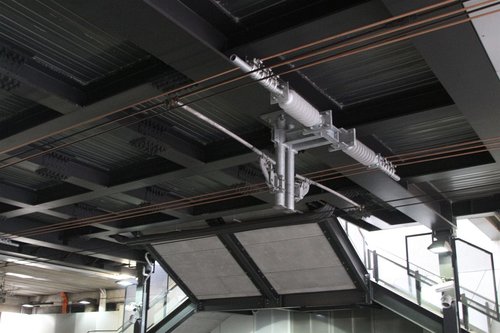
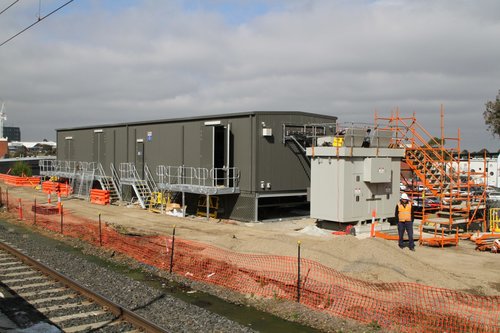
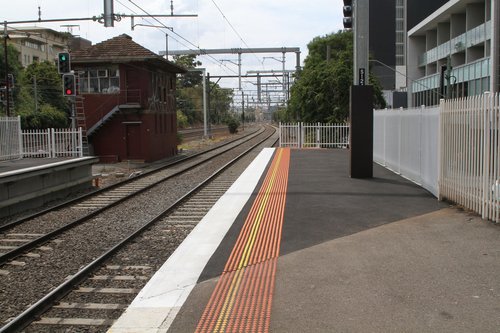
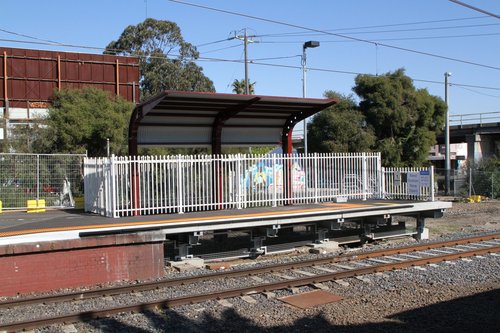
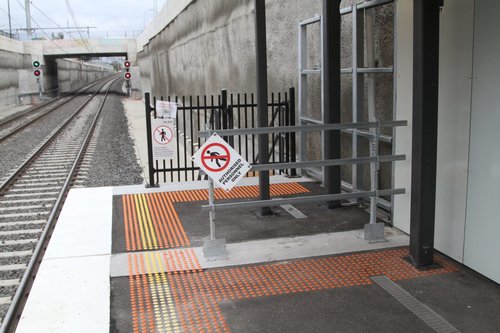

Maybe reread the initial map, and then you might have an idea.
Perhaps the costings for Dandenong to Pakenhan dont include the crossing removal and duplication, while the cost for Sunbury does include a lot of level crossing removal ? Though removing them at Diggers Rest and Sunbury stations would be big projects.
The Gap Rd Sunbury level crossing preferred option is road under rail, which will have reduced effect on the railway as it is the road due to move.
https://levelcrossings.vic.gov.au/projects/gap-road-sunbury/video
The Old Calder Highway crossing in Diggers Rest is not on the LXRA list. It dropped dramatically in any kind of priority for elimination in the 1990s when Diggers Rest was bypassed by the Calder Freeway, a decision that had probably been taken several years prior to construction. Likely the only way to have it grade separated before the bypass was locked in, its best chance for many decades, was much earlier suburban service to Sunbury, which probably would have required the Operation Phoenix electrification of the Bendigo line not to be cancelled in the 1950s (allowing a Pakenham-style suburban service extension in the early to mid-1970s, a couple of decades before the bypass was built).
One problem with this alternate history – the extension of suburban services to Pakenham in the 1970s didn’t lead to any level crossing removals. Narre Warren was the exception, done in 2004 due to the road being duplicated.
The Princes Highway has no level crossings on the Pakenham line, whereas the level crossing in Digger Rest was on the Calder Highway (actually at the station, meaning stopping suburban services would have had a particular impact) before it was bypassed in the 1990s.
The Princes Highway does have a (due to be abolished as part of the governments programme of abolitions) level crossing on the South Gippsland Highway but that was bypassed with the short South Gippsland Freeway.
The Rail Infrastructure Alliance (RIA) scope includes:
From:
https://gateway.icn.org.au/project/3958/rail-projects-victoria-rail-infrastructure-alliance-ria
What is “Oakleigh hot standby”? Surely to do that would require a siding or turnback platform. Oakleigh used to have these things, but they were removed recently without being replaced.
A “hot standby” train is one prepped and with a driver onboard, ready to enter serivce. It already happens today in peaks:
https://www.parliament.vic.gov.au/images/stories/documents/council/Select_Committees/Trains/Transcripts/MTM_Presentation_SCOTS_2_March_2010_Final.pdf
I believe they have a train sitting at Melbourne Yard (next to North Melbourne) and another at Camberwell.
For Oakleigh they’d need a siding clear on the main line for the standby train to wait in, but they probably won’t need a third platform.
The previous track layout at Oakleigh was designed for trains terminating from the city, then heading back again – the recent trackwork straightened out the mess of points, while also making it easier to provide DDA compliant access to the island platform.
Hot standby at Oakleigh does not fit very well with the removal of the sidings and their associated crossover to the now platform 2 (formerly platform 3).
The main problem with the old layout of points was that up express trains (i.e. V-Line) using the track through the then platform 2 (now platform 1) faced 40km/h points, making up overtaking (at which Westall is near useless) inefficient.
The new layout has too few crossovers for peak service levels, making dealing with a disruption harder, mainly to avoid facing crossovers.
A Blackburn style lift from the subway (with separate Myki readers) could have been installed, possibly requiring the kiosk to be moved.
I wonder if they’ll do a track slew at Oakleigh to put the standby siding in the middle of the mainline, or whether they’ll just add it to the side, and live with the conflicts if the train has to head out the ‘other’ way.
If you want to turn back “Sunbury-bound” trains at Footscray, then it isn’t actually a Sunbury-bound train.
It was bound for Sunbury until you turned it back early. 😛
It’s best practice to have the turn backs in the middle of the line to not disrupt the other trains. This is what they have been doing in Perth for years.
The original turnback sidings at Oakleigh were between the main lines, as is the much newer sidings at Watergardens:
[…] visible are the power and signalling upgrades to cope with more and longer trains – in fact half the Sunbury line is closing for much of […]
[…] Signalling improvement works on the Sunshine – Dandenong Line are well underway, with the High Capacity Signalling rollout well underway. […]
[…] on the Sunbury Line Upgrade project also ramped up at this time, the most visible change being platform extensions for the longer […]